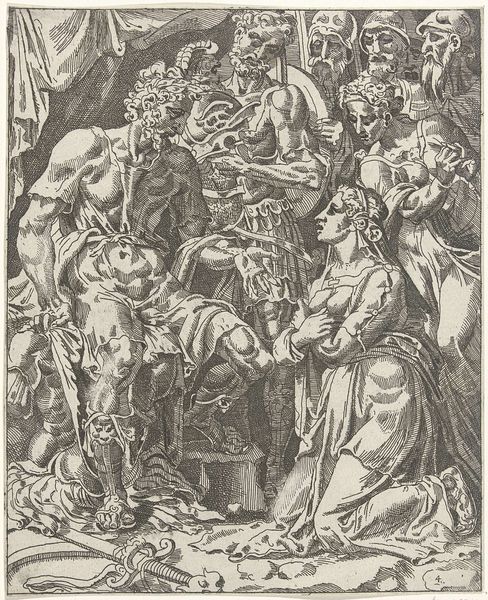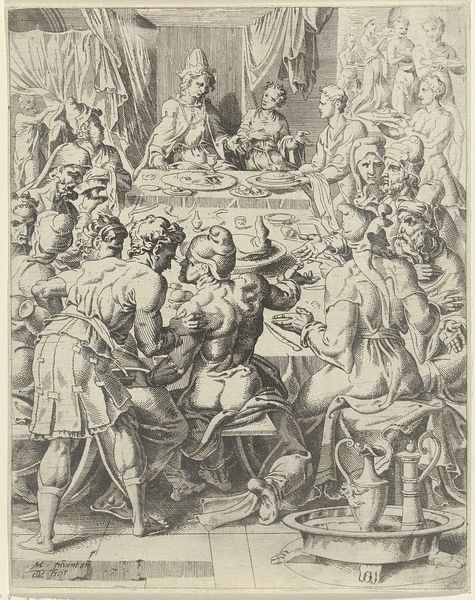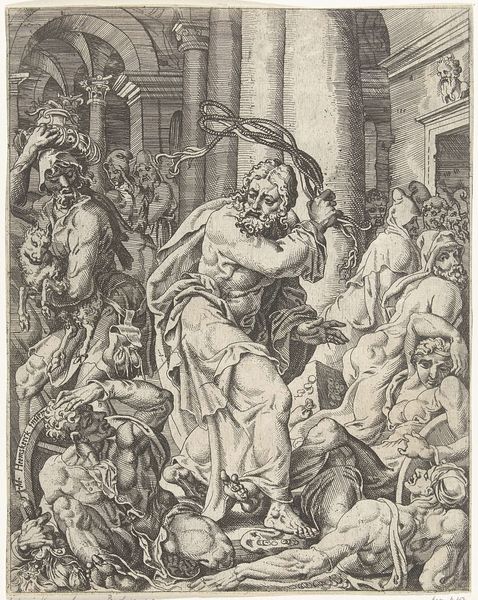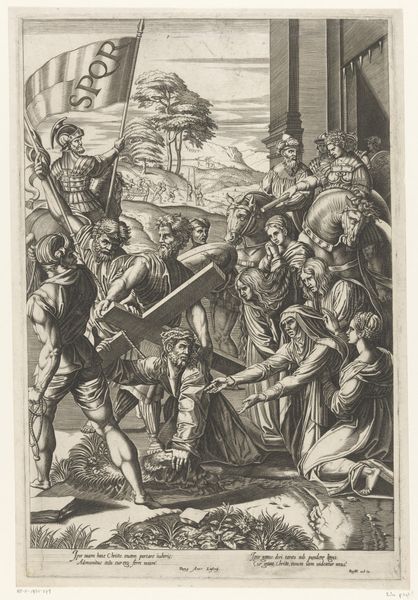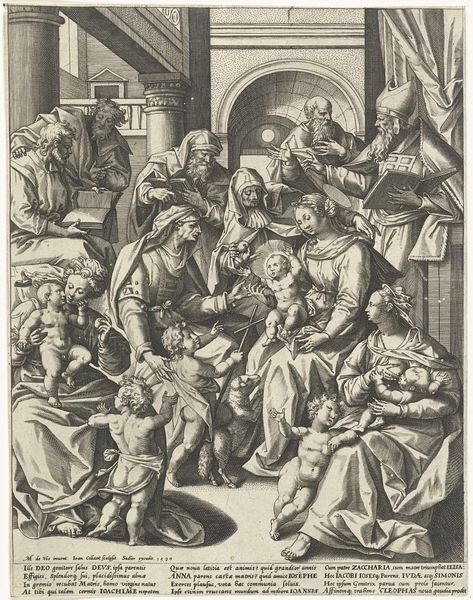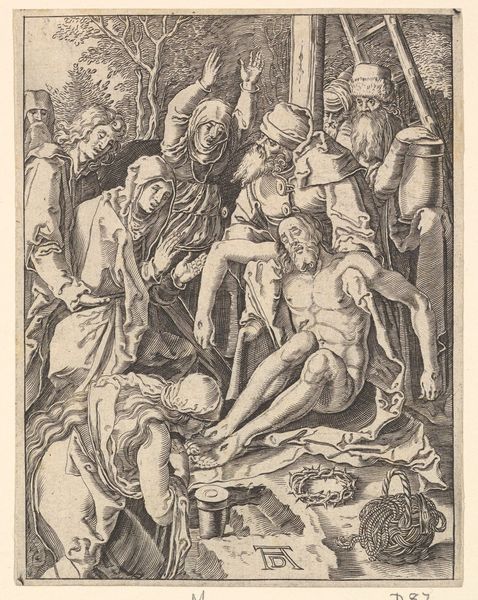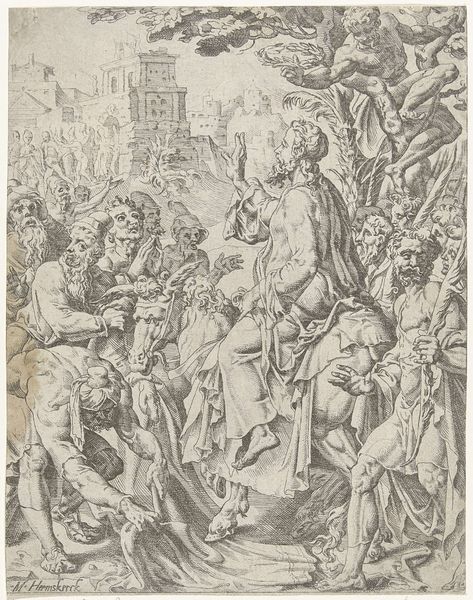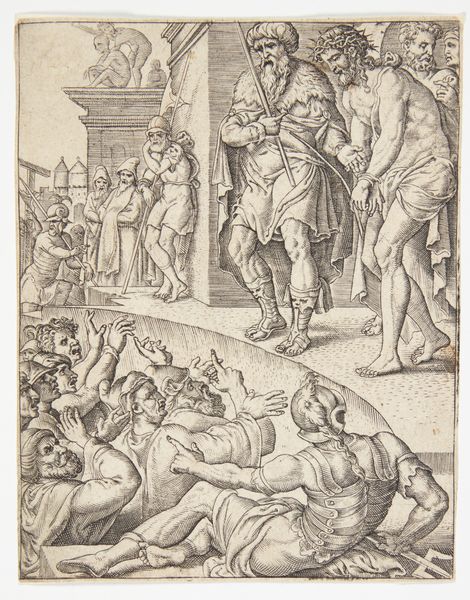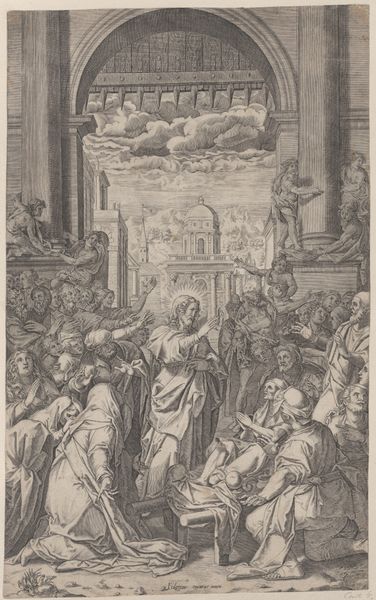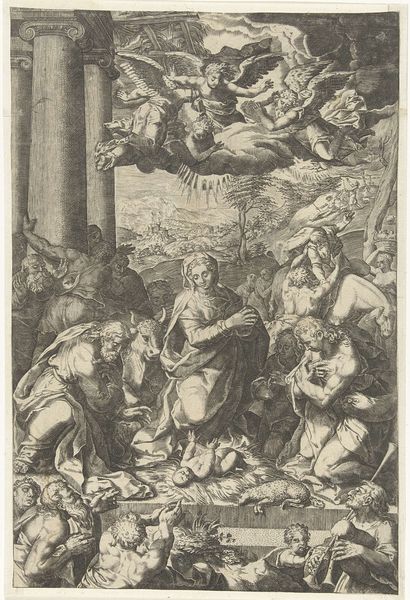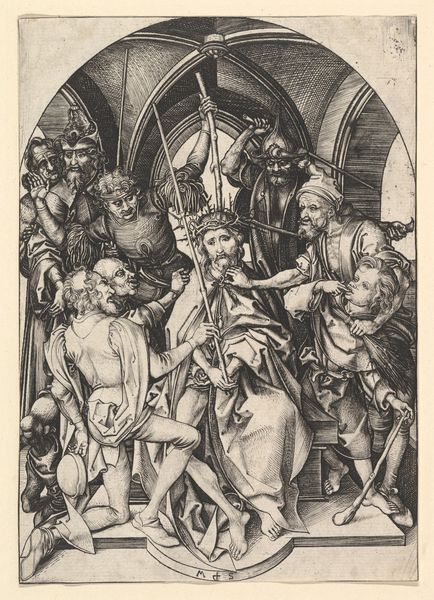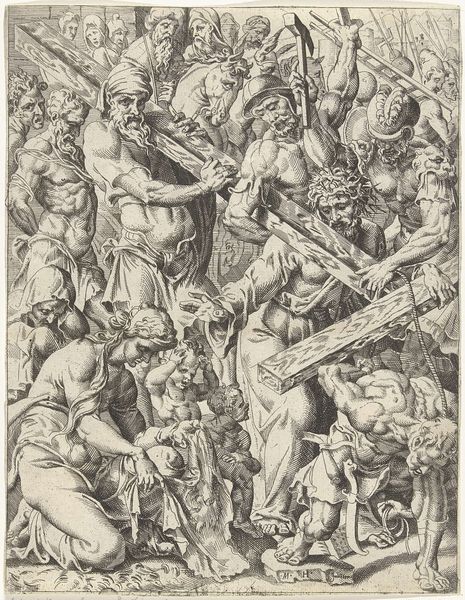
drawing, etching, ink, pen
#
drawing
#
ink drawing
#
narrative-art
#
pen drawing
#
pen illustration
#
pen sketch
#
etching
#
mannerism
#
figuration
#
ink
#
pen
#
history-painting
Dimensions: width 192 mm, height 246 mm
Copyright: Rijks Museum: Open Domain
Curator: Here we have Dirck Volckertsz Coornhert's "Judas' Kiss and the Arrest of Christ" from 1548. It’s an etching, made with pen and ink. Editor: The density of figures is really striking; it's like the whole picture plane is activated. It’s also pretty violent. What stands out to you? Curator: Let’s consider the material process. This isn’t painting, right? It's printmaking, and that changes everything. Etchings like this democratized images; it could be reproduced and distributed on a wider scale than a unique painting. How might the mass production of images like these influence public understanding of religious narratives? Editor: I see your point, it’s more accessible. So, rather than a singular, precious object for the elite, it's entering everyday life... like visual propaganda almost? Curator: Precisely. Think about the cost of materials like ink and paper at the time, compared to something like oil paint. This would also impact who could become an artist, lowering some barriers perhaps. What’s your read on the relationship between the narrative being portrayed and the artistic choices that were made to make that visual transfer so palpable to the viewer? Editor: It seems deliberate. I mean, all that raw action is designed to evoke a strong reaction in the viewer. By thinking about the materiality, I now see how the very nature of etching enhances the power of the message. Curator: Exactly! So next time you encounter an artwork, don’t just think about the image itself, consider the labor, the materials, and how they were distributed. Editor: Thanks! That's a very different and interesting way to read art. I will definitely be looking at the artwork with fresh eyes now.
Comments
No comments
Be the first to comment and join the conversation on the ultimate creative platform.

